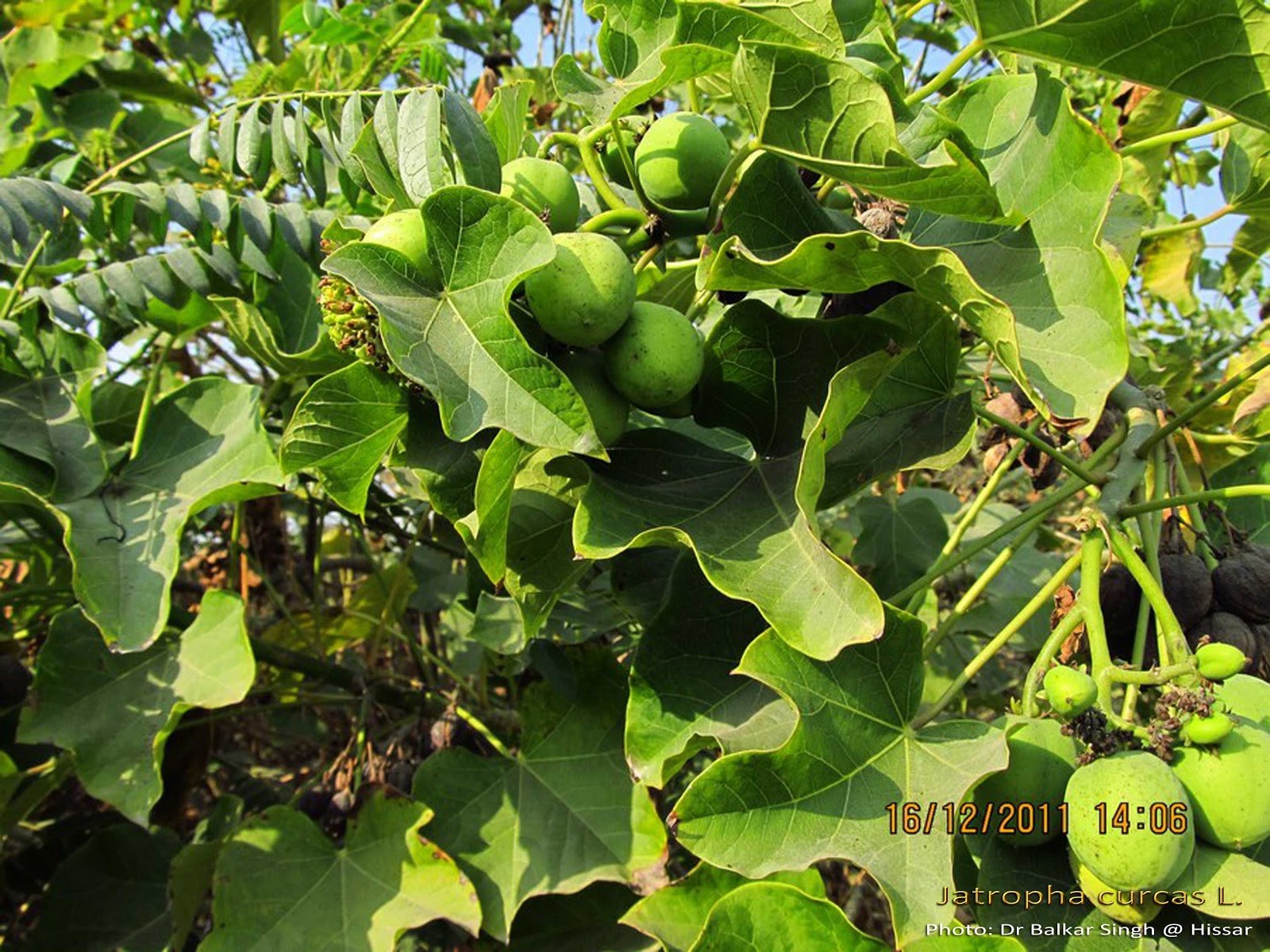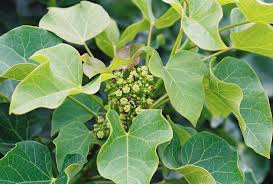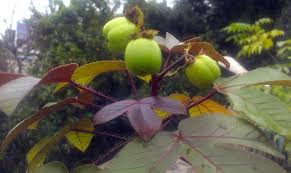Jatropha curcas Linn.
| Botanical Name | Jatropha curcas Linn. |
| Order: | Malpighiales |
| Family: | Euphorbiaceae |
| Genus: | Jatropha |
| Species: | J. curcas |
| Common Names: | Physic nut, Barbados nut, Purging nut, curcas bean, Black vomit nut |
Plant Synonyms
Plant Local Names
Hausa Name: Bindazugu
Yoruba Name: Botuje, Lapalapa funfun
Igbo Name: Olulu idu, Owulu idu
Plant Habitat
Plant Material of Interest
Leaves, Latex and twigs.
Plant Description
Shrub or Small tree up to 4m or more high with viscid milky or reddish sap. Leaves broadly ovate, entire or shallowly lobed up to 15cm long and broad, openly cordate at base. Flowers green, the male and female borne at different times in the same inflorescence; petals 6- 7mm long; capsule sub spherical 4cm long; seeds blackish about 2cm long (Seaforth et. al., 1985)
Plant Used Parts
Plant Uses
i. The greenish viscid juice and the pounded leaves are also slightly rubefacient and are applied to sluggish ulcers.
ii. The juice or the crushed leaf is applied directly to cuts and bleeding wounds as a styptic.
iii. A decoction of the young leaves is also taken internally for fever.
iv. Decoction of bark is used as remedy for gonorrhoea.
v. Decoction of leaves used to sterilize umbellicus of new born babies.
vi. Leaves added to hasten fermentation of cassava.
vii. Twigs used as chewing stick to prevent tooth decay, oral thrust, bleeding, wounds and toothache (Sofowora, 1984).
Plant Therapeutic Action
Plant Precaution for Use
Plant Adverse Effect
Plant Contraindication
Plant Dosage Forms
Plant Dosage
Plant Storage
Plant Chromatographic Fingerprint
Plant Constituents
The seed per 100g is reported to contain 6.6g water, 18.2g protein, 38.0g fat, 33.5g total carbohydrate, 15.5g fiber, 4.5g ash, and curcin. The nut contains saccharose, raffinose, stachyose, glucose, fructose, galactose, protein, oil (largely oleic and linoleic). Others are arachidic, myristic, palmitic and steric acids) and curcasin (Duke, 1983). The kernel contains 31.1- 34% crude protein, 55- 58% lipid, 3.9- 4.5% fiber of dry matter, 34.6- 44.4% linoleic, 10.5- 13.0% palmitic, 2.3- 2.8% stearic, cis-11-eicosanoic acid, cis-11,14-eicosadienoic acid, antinutrients (Trypsin inhibitors, phytates, saponins and lectins) (Martinez-Herrera et. al, 2006)
The oil contains campestrol, stigmasterol, β-sitosterol, δ9-avenasterol, δ7-stigmasterol, 72.7% unsaturated fatty acids with oleic acis predominant, deoxypreussomerins [palmarumycins CP1, JC1, and JC] CP1, JC1, and JC] (Ravindranath et. al., 2004), phorbol esters. The leaves contain β-sitosterol, α- amyrin, stigmasterol, campesterol, 7- Keto-β-sitosterol, stigmast-5-ene-3β-7-α-diol, stigmast-5-ene, 7-β-diol, isovitexin and vitexin. Others are curculathyrane A (japodagrol), jatrophine, new lathryrane and podocarpane diterpenoids including tetradecyl-(E)-ferulate, 3-O-(Z)- coumaroyl-oleanolic acid, heudelotinone, epi-isojatrogrossidione, 2-α-hydroxyepi-isojatrogrossidione and 2-methlanthraquinone (Ravindranath et. al., 2004.)



